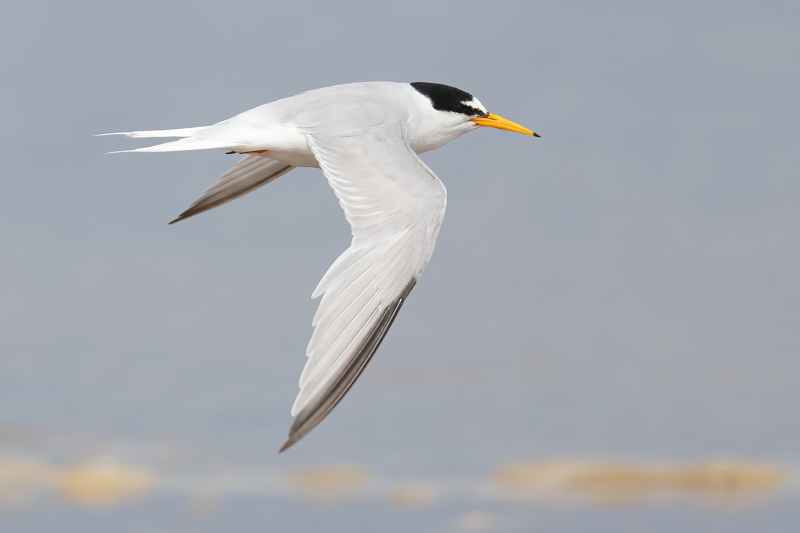The largest river in Lithuania, the Nemunas, was once the perfect habitat for the Little Tern (Sternula albifrons) and the Common Tern (Sterna hirundo) with its abundant islands and sandy shores. Remarkably, up to 80% of Lithuania’s Little Tern population breeds on the bigger islands of the river. Properly managing these habitats, is essential for the survival of both species.
Four Special Protected Areas have been designated along the river to protect these chattering seabirds. But long-term monitoring data from 2009 to 2019 revealed that all four sites have been more than unfavourable for breeding. The main problem was the lack of suitable nesting sites for the terns. The excavation of the shallow river zones during maintenance of the waterway, together with high water levels during the tern’s breeding season in recent years, were the main contributing factors.
Little Tern, copyright Glyn Sellors, from the surfbirds galleries
Luckily, our Partner on the ground, The Lithuanian Ornithological Society (LOD), is actively involved in an EU LIFE project that brings together key stakeholders to improve the situation for our beloved terns. With LOD’s guidance and expertise, the Lithuanian Inland Waterways Authority created 17 new sandy and gravel islands and beaches on the Nemunas river within the designated SPAs and five more in its estuary. Some islands were elevated to make sure that the terns can still find suitable nesting areas in years of extremely high water levels. This effort was complemented with the controlled and adapted maintenance of the water transport corridor. Existing islands were also bolstered up.
Recent monitoring data indicates a significant increase in the number of nesting sites of the Little and Common Terns in the project area. Other shore birds, such as the Eurasian Oystercatcher (Haematopus ostralegus) classified as Near Threatened on the IUCN Red List, have also reaped the benefits from this initiative. Excitingly, the Lithuanian Inland Waterways Authority has promised to continue doing good for birds beyond the scope of the project and will create new sandy islands in other sections of the Nemunas river and the Curonian Lagoon in the future.
We hope that this excellent collaboration between the national water authorities and the local nature conservation organisation will inspire others and show that by working together, we can make our rivers thrive again.



